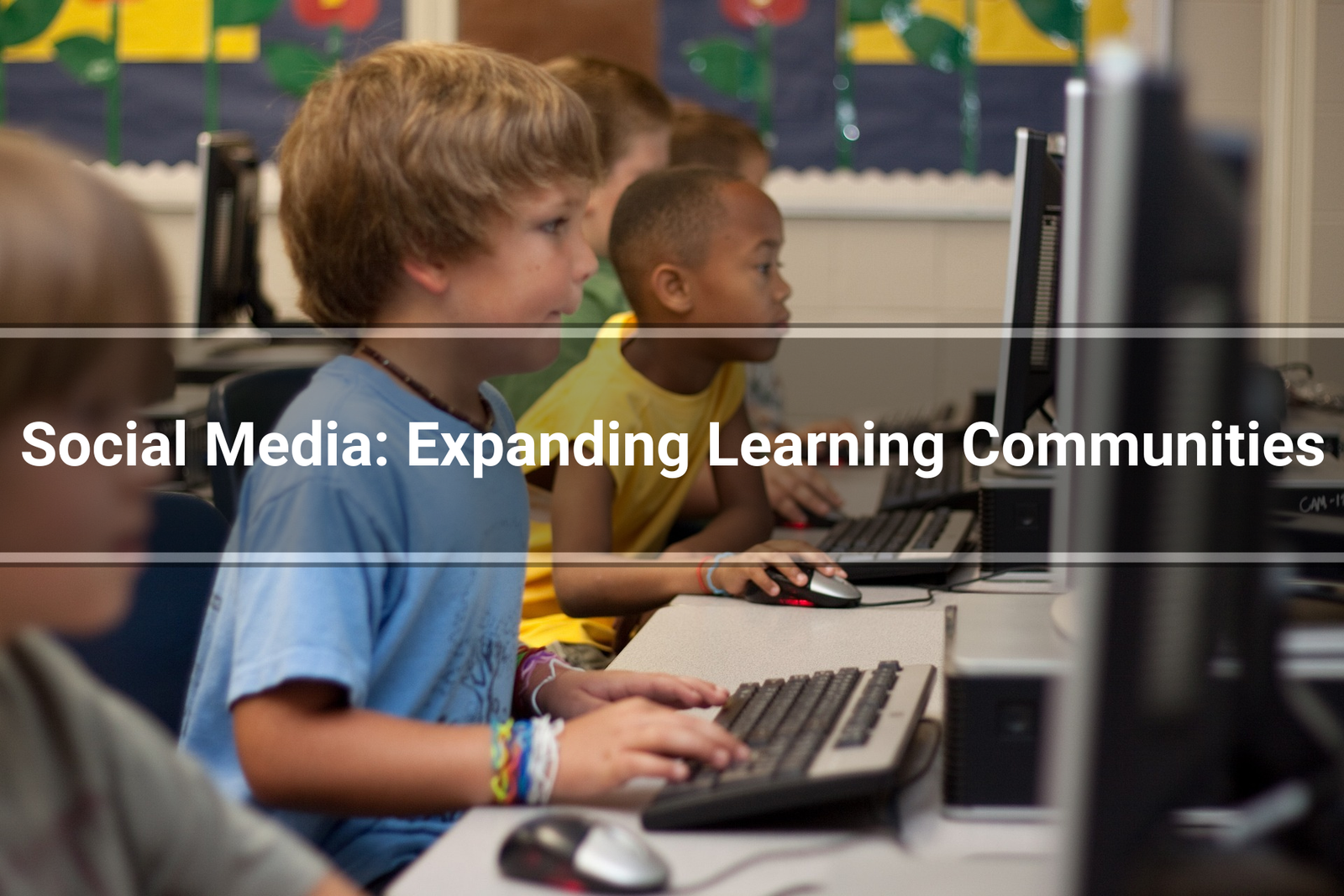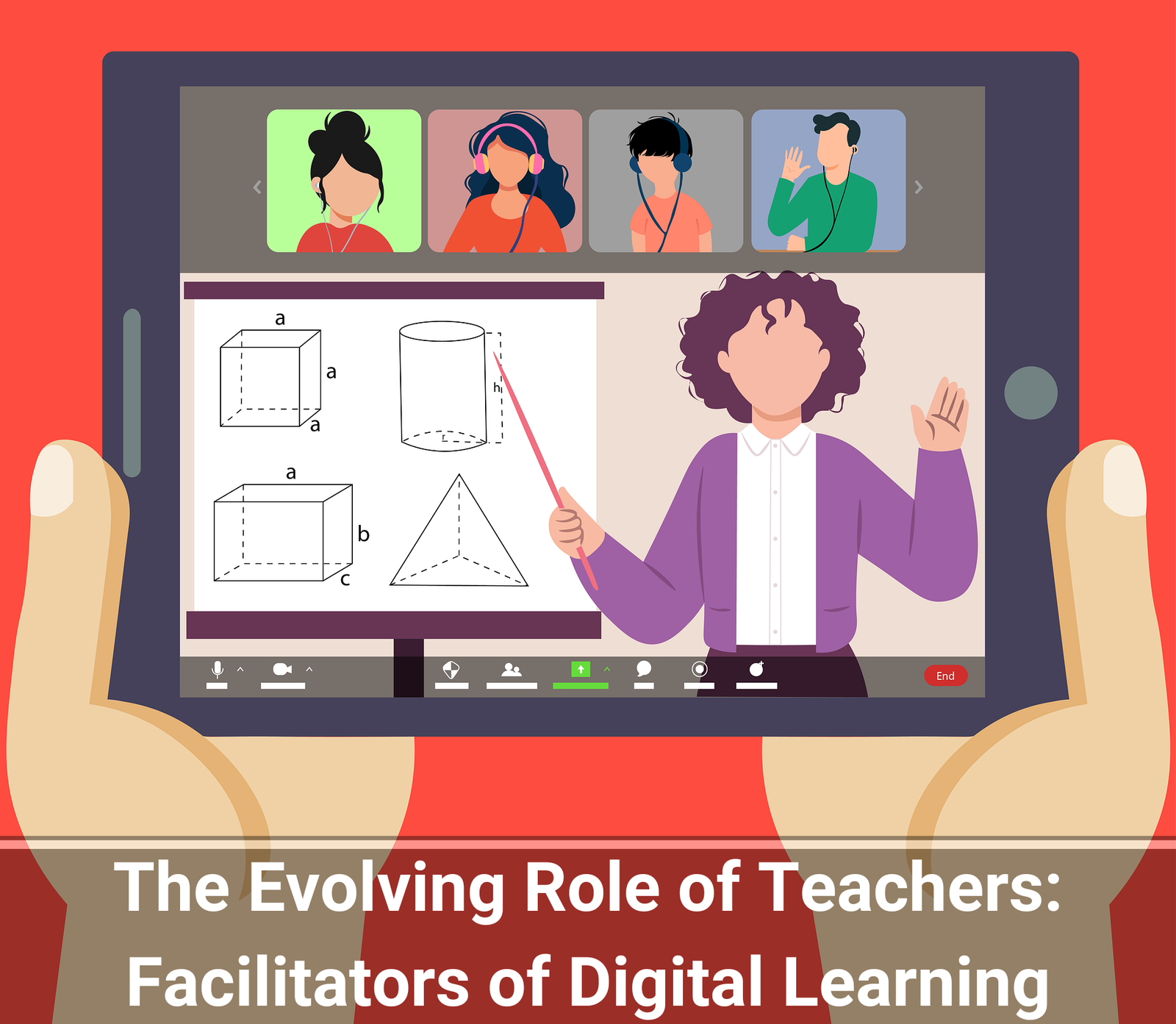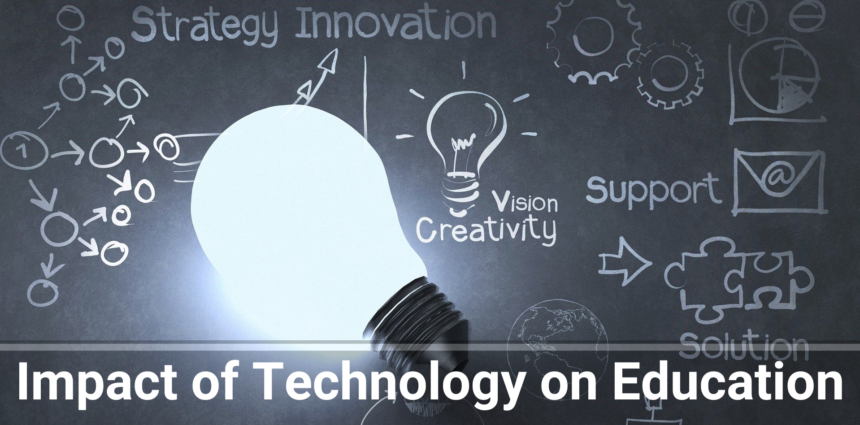In today’s rapidly changing world, technology has become a powerful catalyst in the realm of education, fundamentally altering how we learn and teach. Gone are the days when education was confined to dusty textbooks and chalkboards; technology has introduced a whole new dimension to the learning experience. From digital classrooms to interactive apps, these advancements are not just upgrades but complete overhauls of how knowledge is shared and absorbed. This article explores the sweeping changes technology has brought to education, how it has enhanced learning experiences, and the challenges that come with its integration. Through this exploration, we will gain a deeper understanding of how technology is shaping the future of education and what lies ahead for learners and educators alike.
The Evolution of Educational Technology
Educational technology has come a long way since the days when the classroom was dominated by chalkboards and textbooks. Imagine the simplicity of filmstrips and overhead projectors, which were once cutting-edge tools used to bring lessons to life. These early technologies laid the groundwork for the more sophisticated digital tools we use today. The 1980s marked a significant turning point with the introduction of personal computers into classrooms. These machines didn’t just offer new ways to engage with information; they began to transform how students interacted with learning materials, thanks to innovative educational software.
Fast forward to the present, and the evolution is nothing short of remarkable. We now have smart devices that fit in our pockets, cloud-based platforms that provide endless resources, and advanced multimedia tools that make learning more interactive than ever. These modern technologies not only enhance the traditional methods of teaching but also open up new avenues for exploration and discovery. The integration of these tools continues to push the boundaries of what’s possible in education, offering students and educators an ever-expanding array of opportunities to enrich the learning experience.
The Significance of Technology in Modern Classrooms
In today’s classrooms, technology is much more than just a supplementary tool; it has become a core element of the educational experience. Imagine walking into a classroom where smartboards replace dusty chalkboards and tablets are as common as textbooks. This shift has transformed the learning environment into a vibrant and interactive space that captivates students in ways traditional methods often can’t.
With these advanced tools, teachers can offer instant feedback, providing students with immediate insights into their performance and understanding. The internet opens doors to an almost limitless supply of information, making it easier for students to explore subjects in depth and at their own pace. Furthermore, technology fosters collaboration by allowing students to work together on projects, share ideas, and engage in discussions with peers from around the globe.
What truly sets technology apart is its adaptability to diverse learning styles and needs. Whether a student learns best through visual aids, hands-on activities, or interactive simulations, there’s a technological solution that can cater to their unique preferences. This flexibility not only enhances the teaching process but also makes learning more personalized and effective. In essence, technology in modern classrooms has redefined how education is delivered and received, making it more engaging, interactive, and tailored to individual needs.
Enhancing Learning Experiences With Technology
Interactive Learning Tools: Revolutionizing Engagement
Interactive learning tools have truly transformed how students engage with their lessons, turning the classroom into a dynamic space where learning becomes an active and immersive experience. Gone are the days when students merely listened and took notes; today’s tools invite them to participate actively in their education. Think of interactive whiteboards where students can come up to the board, manipulate images, and contribute directly to the lesson. Educational apps, too, have revolutionized learning by offering interactive exercises that make complex concepts easier to grasp through hands-on practice.
These tools not only make learning more engaging but also help deepen students’ understanding of the material. When students interact with content through simulations, games, and multimedia elements like videos and quizzes, they are more likely to retain information and apply it in meaningful ways. For instance, a history lesson might come alive through a virtual tour of ancient ruins, while a science class could benefit from interactive simulations that illustrate complex processes.
The essence of these interactive tools lies in their ability to make learning a participatory and enjoyable experience. By transforming passive lessons into active, engaging activities, educators can foster a greater interest in the subject matter and promote a deeper comprehension of the material. This shift towards interactive learning not only makes education more appealing but also equips students with a more robust and lasting understanding of the topics they study.
Gamification in Education: Turning Lessons into Adventures With Technology
Gamification brings a playful twist to the classroom by infusing game-design elements into educational activities, making learning feel like an adventure. Imagine turning a history lesson into a quest where students earn points for completing research tasks, or a math challenge where solving problems unlocks new levels of a game. By incorporating features such as point systems, leaderboards, and rewards, educators transform mundane lessons into exciting and engaging experiences.
This approach does more than just make learning fun; it taps into the natural competitive spirit and intrinsic motivation of students. When students can see their progress reflected in scores or rankings, they are more driven to tackle challenges and achieve goals. The sense of accomplishment and progress they experience is not just gratifying; it reinforces their understanding of the material.
Gamified lessons often involve practical application and problem-solving, allowing students to learn through active participation rather than passive reception. For example, a science class might use a simulation game to explore ecosystems, or a language class might incorporate role-playing scenarios to practice conversation skills. These interactive elements make the learning process more memorable and impactful, helping students retain information and apply it in real-world contexts.
In essence, gamification turns education into a series of engaging and motivating adventures, where learning becomes an enjoyable pursuit and students are driven by the thrill of discovery and achievement.
Online Libraries and Digital Archives: A World of Resources at Your Fingertips
Online libraries and digital archives have revolutionized how students access and engage with academic resources, making the wealth of human knowledge available at the touch of a button. Gone are the days of poring over dusty volumes in a physical library. Now, students can tap into a vast digital repository that houses everything from classic literature and scientific journals to rare historical documents and cutting-edge research.
Imagine having an entire library of books, articles, and academic papers available 24/7, no matter where you are. This level of convenience means students can dive into primary sources, uncover rare texts, and stay up-to-date with the latest scholarly work, all without being constrained by the opening hours of traditional libraries or geographical limitations. Whether you’re working on a late-night research project or exploring a topic of personal interest, these digital resources are always at your disposal.
The ability to access such a diverse range of materials at any time not only supports academic research but also fosters a culture of lifelong learning. Students can explore new subjects, revisit old ones, and continually expand their knowledge base, all from the comfort of their homes. This seamless access to information encourages curiosity and self-directed learning, helping students become more independent and resourceful researchers.
In essence, online libraries and digital archives have democratized access to knowledge, breaking down barriers and opening up a world of resources that empower students to explore, learn, and grow in ways that were once unimaginable.
Educational Apps and Platforms: Customizing Learning Paths

Educational apps and platforms have become game-changers in creating personalized learning journeys for students. Imagine having a learning tool that adapts to your unique needs, allowing you to work at your own pace and focus on areas where you need the most help. These digital resources offer a wealth of content and activities designed to match individual learning styles and goals, making education more flexible and tailored to each student’s needs.
With educational apps, students can explore a diverse range of subjects and skills, finding resources that align perfectly with their personal interests and academic challenges. For example, if a student struggles with algebra, they can use an app that offers practice problems, interactive tutorials, and instant feedback specifically designed to address those difficulties. Conversely, a student excelling in literature might find advanced reading materials and analysis tools to further their understanding and skills.
The ability to revisit concepts and receive immediate feedback is another significant advantage of these digital tools. Instead of waiting for a weekly test or assignment to gauge their understanding, students can get real-time insights into their progress, allowing them to adjust their learning strategies promptly. This instant feedback loop helps reinforce concepts and correct misunderstandings more efficiently.
Overall, educational apps and platforms bring a level of customization that enhances the learning experience by addressing each student’s strengths and weaknesses. This personalized approach not only makes learning more engaging but also supports students in achieving their academic objectives with greater effectiveness. By adapting to individual needs, these tools help create a more dynamic and responsive educational environment.
AI in Education: Intelligent Tutoring Systems and Beyond
Artificial Intelligence (AI) is making waves in education, transforming how students learn and how educators teach. Imagine having a personal tutor that’s available 24/7, ready to help with any subject, provide instant answers, and offer explanations tailored just for you. That’s what AI-driven platforms are bringing to the table. These smart systems use advanced algorithms and machine learning to adapt to each student’s unique learning style and needs, offering personalized tutoring that evolves as students progress.
AI doesn’t stop at tutoring. It’s also streamlining administrative tasks, taking on the heavy lifting of grading and data analysis. This means that educators can spend less time on paperwork and more time engaging with students, planning innovative lessons, and fostering a supportive learning environment. With AI handling routine tasks, teachers can focus on what they do best: inspiring and educating their students.
Moreover, AI tools are becoming increasingly adept at providing insights into student performance, helping to identify areas where additional support might be needed. This ability to analyze data and track progress allows for a more proactive approach to education, ensuring that students receive the help they need when they need it.
In essence, AI is not just enhancing the learning experience with personalized support but also optimizing the educational process for both students and teachers. As these technologies continue to advance, they promise to make education more efficient, accessible, and tailored to individual needs, paving the way for a more effective and engaging learning journey.
Collaboration and Communication By Technology
Digital Classrooms: Breaking Down Geographical Barriers
Digital classrooms have truly transformed the landscape of education, making it possible for students to connect and collaborate across vast distances. Gone are the days when physical location limited educational opportunities. Now, through online platforms and virtual classrooms, students from different corners of the world can join the same class, participate in lively discussions, and work on group projects together in real time.
This global connectivity doesn’t just bring people together; it fosters a rich cultural exchange and broadens students’ perspectives. Imagine a classroom where students from New York are discussing a project with peers in Tokyo or collaborating with classmates in Nairobi. Such interactions not only enhance learning but also help students develop a greater appreciation for diverse viewpoints and cultures.
Digital classrooms also offer remarkable flexibility. Students can attend classes and access learning materials from anywhere, removing the constraints of traditional scheduling and geographical limitations. This adaptability means that education can fit around different lifestyles and commitments, whether it’s a student balancing studies with work or a learner in a remote area with limited access to physical schools.
In essence, digital classrooms are creating a more inclusive and flexible learning environment, where the boundaries of geography and time are no longer barriers to education. This interconnected approach not only makes learning more accessible but also enriches the educational experience by bringing together diverse voices and perspectives from around the globe.
Social Media: Expanding Learning Communities

Social media has become a powerful tool for enhancing learning and expanding educational communities far beyond the confines of the traditional classroom. Platforms like Facebook, Twitter, and LinkedIn offer spaces where educators and students can connect through groups, forums, and pages focused on specific subjects or interests. These digital spaces foster a sense of community and provide valuable opportunities for knowledge sharing and collaborative learning.
For instance, students can join groups related to their academic interests, participate in discussions about recent developments in their field, or access resources shared by experts and peers. Educators, on the other hand, can create and manage forums where they exchange ideas, discuss teaching strategies, and access a wealth of professional development resources. This kind of engagement not only enhances the learning experience but also builds networks that support both personal and professional growth.
Social media also encourages lifelong learning by providing access to a diverse array of educational content. Whether it’s through following thought leaders, participating in online workshops, or engaging in webinars, learners can continually expand their knowledge and skills. These platforms make it easy to stay updated on industry trends, discover new educational tools, and connect with a global network of like-minded individuals.
In essence, social media is transforming how we think about learning communities. It breaks down the walls of traditional education, allowing for a more dynamic and interconnected approach to learning. By leveraging these platforms, educators and students alike can engage in meaningful discussions, collaborate on projects, and support each other’s educational journeys, making learning a more inclusive and ongoing process.
Challenges and enterprises With Technology
Digital Divide Addressing Inequality in Access to Technology
Despite the remarkable advancements in educational technology, one of the pressing challenges remains the digital peak — a significant hedge that highlights the difference in access to technology and the internet. While some scholars profit from state- of- the- art digital tools and online literacy platforms, others, particularly those from low- income backgrounds or remote pastoral areas, frequently warrant the necessary coffers to take full advantage of these advancements.
Imagine a pupil in a pastoral community who does n’t have dependable internet access or a computer at home. For them, the pledge of digital education can feel out of reach, creating a gap between those who can fluently engage with online coffers and those who can not. This difference not only affects scholars’ capability to share in digital literacy but also limits their openings to succeed academically compared to their peers who have better access.
Addressing the digital peak requires further than just furnishing access to technology. It involves a combined trouble to insure that all scholars have the support they need to use these tools effectively. This could mean enforcing programs that give affordable or free bias to underserved communities, investing in structure to ameliorate internet connectivity in pastoral areas, and offering training for both scholars and preceptors to maximize the benefits of digital tools.
sweats to close this gap must be inclusive and comprehensive, aiming to produce a position playing field where every pupil has the occasion to thrive in a technology- enhanced educational terrain. By diving the digital peak head- on, we can work towards a further indifferent education system that ensures all scholars have the chance to profit from the inventions and openings that technology has to offer.
Dependence on Technology Balancing Screen Time and Traditional literacy
As technology becomes decreasingly integrated into education, chancing a balance between screen time and traditional literacy styles is more important than ever. While digital tools bring inconceivable advantages similar as instant access to information, interactive literacy gests , and substantiated feedback — it’s pivotal to flash back that they’re just one piece of the educational mystification.
Overreliance on defenses can lead to a range of issues, from lowered face- to- face relations to implicit distractions and eye strain. To insure a well- rounded education, it’s vital to round digital literacy with traditional styles. Hands- on conditioning, like wisdom trials or creative trades systems, allow scholars to apply their knowledge in practical ways, enhancing their understanding through real- world experience.
Face- to- face relations also play a crucial part in a balanced educational approach. Classroom conversations, group systems, and one- on- one exchanges with preceptors foster critical social chops and help scholars develop deeper connections with their peers and instructors. These relations are essential for erecting communication chops, cooperation, and empathy — rudiments that are occasionally lost in a purely digital terrain.
Incorporating physical coffers, similar as books, published accoutrements , and indeed out-of-door literacy gests , can also enrich the literacy process. These traditional tools give a palpable connection to the material and frequently offer a break from screen time, helping to reduce eye fatigue and promote internal well- being.
Eventually, a balanced approach ensures that technology enhances rather than dominates the literacy experience. By blending digital tools with traditional styles, preceptors can produce a further comprehensive and engaging educational terrain that supports scholars’ different literacy requirements and prepares them for a well- rounded future.
Technology Training for preceptors Preparing for the Digital Age
The part of preceptors
As technology weaves itself more deeply into the fabric of education, it’s essential that preceptors are well- prepared to harness its implicit effectively. For preceptors, staying current with digital tools and platforms is n’t just a matter of keeping up with trends; it’s about perfecting their tutoring practices and meeting the evolving requirements of their scholars.
Professional development programs play a vital part in this process. These programs should be designed to give preceptors with hands- on training and practical chops in using technology. This training can cover a range of motifs, from learning educational software and managing virtual classrooms to understanding data sequestration and integrating interactive tools into assignment plans.
Empowering preceptors with the right technological chops helps them to incorporate digital tools seamlessly into their tutoring. For case, learning how to use interactive whiteboards, produce engaging multimedia donations, or use online assessment tools can significantly enhance instruction and make literacy more dynamic and engaging for scholars.
also, ongoing support is pivotal. Technology evolves fleetly, and nonstop professional development ensures that preceptors can stay ahead of new tools and methodologies. This support might include shops, peer collaboration, and access to tech experts who can give guidance and troubleshooting.
Eventually, when preceptors are confident and complete in using technology, they’re better equipped to foster a more engaging and effective literacy terrain. By embracing technology and integrating it courteously into their tutoring, preceptors can inspire their scholars, address different literacy requirements, and prepare them for the demands of a digital world.
The Evolving Role of Teachers: Facilitators of Digital Learning

As we move further into the digital age, the role of teachers is undergoing a significant transformation. No longer just the primary source of knowledge, educators are evolving into facilitators of digital learning, guiding students through a landscape rich with technological resources and opportunities.
In this new role, teachers help students navigate the vast array of digital tools available to them. They assist in selecting the right apps, platforms, and online resources that align with educational goals and foster an environment where technology enhances learning rather than overwhelms it. This involves not only teaching students how to use these tools effectively but also encouraging them to think critically about the information they encounter and how they can apply it in meaningful ways.
The shift from traditional instruction to a facilitative approach also highlights the importance of developing digital literacy among students. Teachers are instrumental in helping students understand how to evaluate digital content, protect their online privacy, and use technology responsibly. By integrating these skills into their lessons, educators prepare students to thrive in an increasingly digital world.
Moreover, teachers are now expected to foster problem-solving and critical thinking skills by leveraging technology. They create opportunities for students to engage in project-based learning, collaborate on digital platforms, and explore innovative solutions to real-world problems. This hands-on approach not only makes learning more engaging but also equips students with the skills they need to adapt to new technologies and challenges.
In essence, the evolving role of teachers as facilitators of digital learning underscores their importance as mentors and guides in a technology-rich environment. By embracing this new role, educators help students harness the power of technology while nurturing essential skills that will serve them well beyond the classroom.
Balancing Technology and Traditional Teaching Methods
Finding the right balance between technology and traditional teaching methods is key to providing an effective and enriching educational experience. While digital tools bring innovation and convenience to the classroom, traditional methods still hold significant value and contribute essential elements to learning.
Technology offers exciting new ways to engage students, from interactive apps and multimedia presentations to virtual field trips and online collaboration. These tools can make learning more dynamic, provide instant feedback, and cater to diverse learning styles. However, they are most effective when used in conjunction with traditional teaching techniques.
Hands-on activities, for example, allow students to explore concepts through practical experience, reinforcing their understanding in a way that digital tools alone may not. Direct instruction, where teachers present and explain new material, remains crucial for laying the foundation of knowledge. Similarly, face-to-face interactions foster personal connections, encourage collaboration, and help build essential social skills that technology alone cannot replicate.
A blended approach that integrates both technology and traditional methods ensures that students receive a well-rounded education. This might involve using digital tools to supplement and enhance classroom lessons, while still incorporating time for direct instruction, group work, and hands-on activities. For instance, a science class might use virtual simulations to explore complex processes but also conduct physical experiments to apply what they’ve learned in a tangible way. Ultimately, achieving this balance means recognizing the strengths of both technology and traditional methods and using them to complement each other. By blending these approaches, educators can create a more comprehensive learning environment that addresses various educational needs and provides students with a richer, more engaging educational experience.
for further details visit our Software section.









